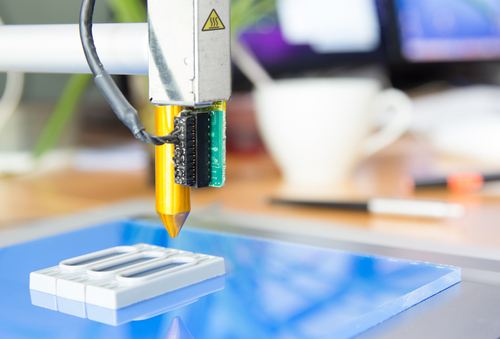Additive manufacturing — more commonly known as 3D printing — has become more and more mainstream in the last few years, thanks to companies like MakerBot developing printers that are within the price range of the average consumer. 3D printing has been around for a long time in the industrial world, where it allows for proof-of-concept pieces for prototypes. But with the advent of these cheaper printers, the collective brainpower of the population has been put into high gear and the innovations are coming far faster than they have in the past.
Custom Parts
Because of the precision and speed at which 3D printed prototypes can be made, manufactures like Nike and Signal are making completely custom shoes and snowboards.
Running shoes made with this process have the advantage as they can be designed with specific athletes in mind. If an athlete needs more arch support or a wider/narrower build, it can be done while still keeping all the advantages of the research and development these companies have put so much money into. The amount of customization can be staggering, since everything from the design and materials used for individual parts can be customized.
Quick Repairs
Sports that rely on precision equipment have benefited greatly from 3D printing. Replacement parts can be made quickly and easily with very high tolerances, especially with the advent of more precise printers. ZDNet reports that the company Aerion was able to build a completely custom racing car — capable of reaching over 80 mph — in three weeks, while incorporating small design details like a textured skin that increased the aerodynamic nature and gave increased efficiency.
If more equipment goes in a similar direction, repairs and new parts can be made nearly on the fly, since the files of any individual parts can be easily stored and brought with a team wherever they go.
Parathletes
The world of parasports has embraced the ability to make 3D printed equipment for their athletes. This is especially helpful for children and young adult athletes, since they outgrow their prosthetics quickly.
Autodesk, one of the leading 3D CAD program companies, has embraced printing in the medical industry. The main advantage these have over more traditional prostetics is the ability to quickly and cheaply make them. Traditional prostetics can cost thousands of dollars rather than the tens or hundreds a printed one can cost. According to Apple Rubber, 3D printed shoes can be quickly and easily customized to give the best fit possible.
Crowdsourcing
Sometimes, engineers run into a problem they just can’t wrap their heads around. Problems like these can quickly be solved when released into the public at large, as sometimes, a nonprofessional will think of a solution when the pros can’t. Crowdsourcing can also let designs for equipment go through an evolutionary process as more and more minds are able to work out and fix tiny problems when users think of novel ways to make it better.
In addition to figuring out how to fix something or make it better, there are websites where people with their own 3D printers can register and allow others to essentially rent usage from them. This can be great, especially when a piece has already been custom made and fails for some reason. Parts can quickly be remade and replace without a lot of shipping hassle.
Beyond
3D printing is only going to get better and more precise as time goes on. Consumers will be able to quickly get the most effective product, whether they are parts for your bicycle or a new hand. As the material science and technology improves, nearly every industry is going to be changed by 3D printing.
This is a post by Aaron Foster who is a Phoenix-based tech enthusiast. He specializes in digital cameras and accessories, Android mobile devices and PC hardware.
About Dr. Eric J. Leech
Eric has written for over a decade. Then one day he created Urbasm.com, a site for every guy.
